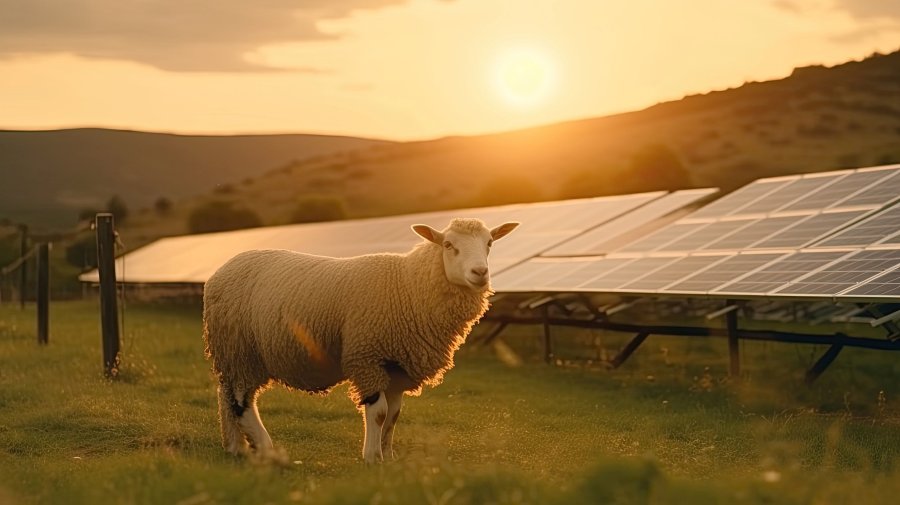Ernstbrunn: Agri-PV planned
Windkraft Simonsfeld's core business is and remains wind energy, but solar energy is also set to play a greater role in clean electricity production in the future. Numerous PV projects are in the planning stage across Austria.
Agri-PV with sheep grazing
A current ‘agri-PV’ project is being implemented in our local community of Ernstbrunn. The plant has a planned output of around 2.6 MWp and will generate the annual electricity requirements of around 700 households. The area will be used for two purposes: sheep will graze next to and under the modules, which will also provide valuable shade. The solar modules are fixed on stands and are bifacial, meaning they can convert light into electricity on both the front and back sides.

symbolic image
Proximity to wind farms enables hybrid use
The major advantage is that the proximity to our wind farms in the municipality allows the grid connection to be used twice. Wind and sun have their highest production capacity at different times of the year and day and complement each other perfectly in terms of electricity production. This means that no additional grid expansion is required and costs for the general public can be saved.
No competition with food production
‘We only plan PV projects on land such as landfills or soil with a low soil value index, i.e. where the yield is low,’ says Nicole Lotter from Windkraft Simonsfeld. This means that there is no competition between food production and energy generation. This is also in line with the requirements of the province of Lower Austria. The expansion of PV on such limited open spaces – in addition to car parks and roofs – is absolutely necessary in order to achieve the climate targets for 2023 and 2040.
In the best case scenario, commissioning can take place this year. In addition to this project, two further plants are planned on open spaces; solar energy is an integral part of Windkraft Simonsfeld's expansion strategy until 2030.